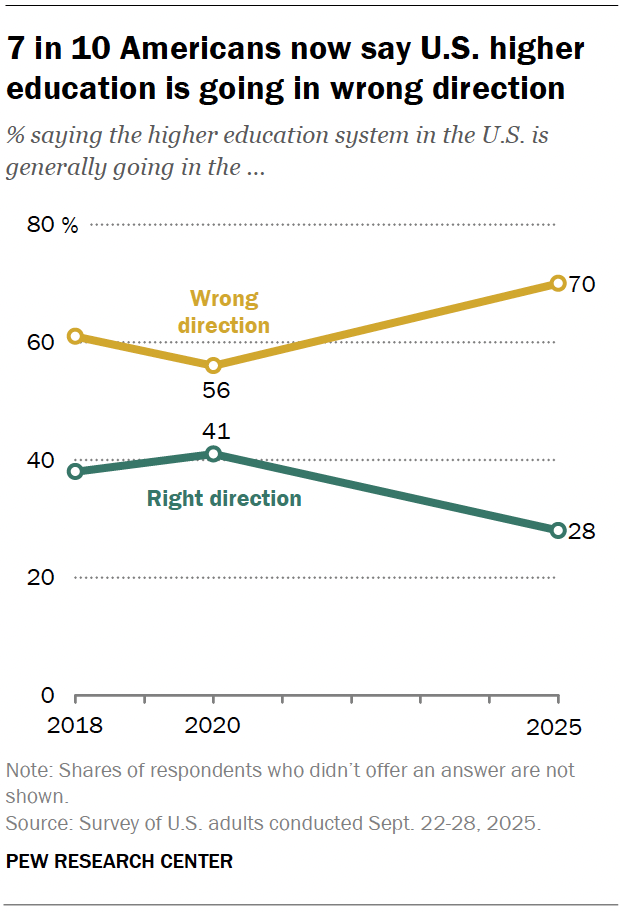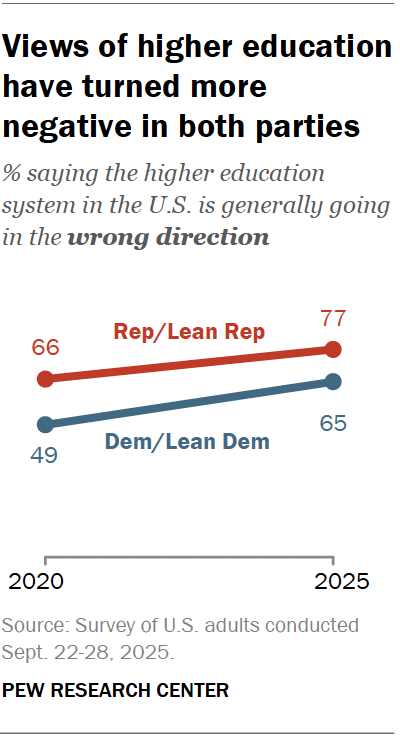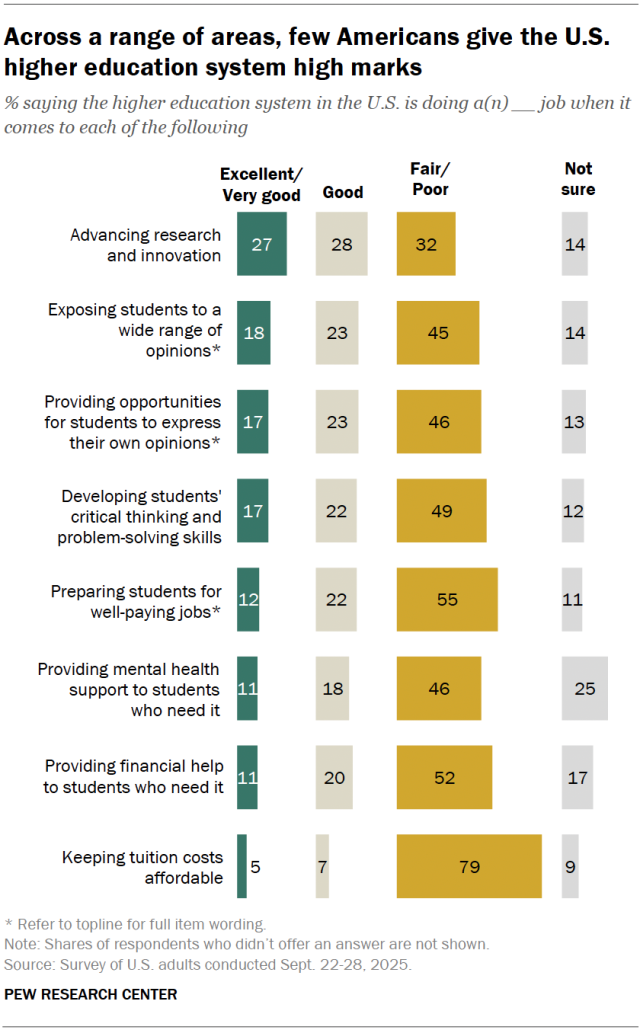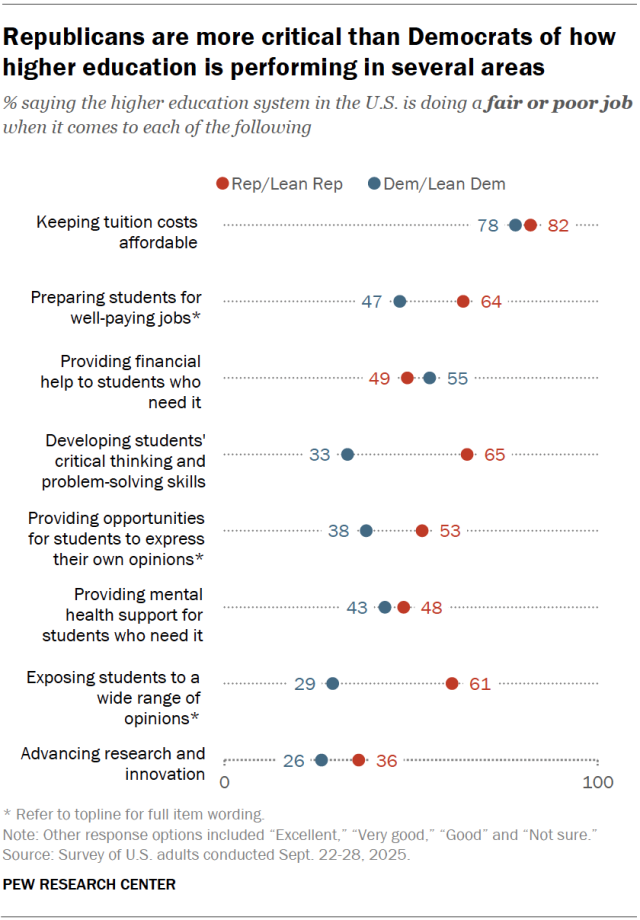
Seven-in-ten Americans now say the higher education system in the United States is generally going in the wrong direction – up from 56% who said this in 2020, according to a new Pew Research Center survey.

In addition, many give colleges and universities negative ratings across a range of specific areas – from keeping tuition costs affordable to preparing students for jobs in today’s economy.
The survey of 3,445 U.S. adults comes as the Trump administration has taken several high-profile actions related to colleges and universities. Recently, the administration proposed that nine universities agree to a set of policy changes in exchange for special access to federal funds.
In the new survey, majorities across all major demographic groups share the view that the U.S. higher education system is going in the wrong direction. But some groups are more likely than others to say this. For example, adults who have a four-year college degree are somewhat more likely than those without a college degree to express this view (74% vs. 69%).

Similarly, 77% of Republicans and Republican-leaning independents say the higher education system is going in the wrong direction, compared with a smaller majority (65%) of Democrats and Democratic leaners. In both parties, these shares have gone up by at least 10 percentage points since 2020 – and the gap between Republicans and Democrats has narrowed.
How are colleges and universities doing in specific areas?
We also asked the public to rate how the higher education system is doing when it comes to more specific roles and functions. Respondents could choose excellent, very good, good, fair or poor. Relatively few Americans give the system high marks in each area.
About eight-in-ten adults (79%) say colleges and universities are doing a fair or poor job of keeping tuition costs affordable.
And about half or more give colleges and universities fair or poor ratings on preparing students for well-paying jobs in today’s economy (55%), providing financial help to students who need it (52%), and developing students’ critical thinking and problem-solving skills (49%).
When it comes to free speech on college campuses, many Americans also express negative views: 45% say colleges and universities are doing a fair or poor job exposing students to a wide range of opinions and viewpoints. And a similar share (46%) say this about colleges and universities providing students opportunities to express their own opinions and viewpoints.
The survey asked about two additional areas:
Providing mental health support for students who need it: This is a growing issue on college campuses. Some 46% of adults say colleges and universities are doing a fair or poor job, while a quarter of Americans say they’re not sure.
Advancing research and innovation: This is where higher education scores the highest. About one-in-four adults (27%) give colleges and universities an excellent or very good rating, while 32% rate them as fair or poor.

How do Republicans and Democrats view performance of higher education in specific areas?
Republicans tend to have more negative views than Democrats of the performance of the higher education system. On issues relating to skills, job preparation and free speech, Republicans are at least 15 points more likely than Democrats to say the higher education system is doing a fair or poor job:
- Preparing students for well-paying jobs in today’s economy (64% of Republicans say colleges and universities are doing a fair or poor job, vs. 47% of Democrats)
- Developing students’ critical thinking and problem-solving skills (65% vs. 33%)
- Exposing students to a wide range of opinions and viewpoints (61% vs. 29%)
- Providing opportunities for students to express their own opinions and views (53% vs. 38%)
In turn, Democrats are somewhat more likely than Republicans to say the higher education system is doing a fair or poor job providing financial help to students who need it (55% vs. 49%).
Democrats and Republicans have similar views when it comes to how well colleges and universities are doing in keeping tuition costs affordable. Large majorities in each group say colleges are doing a fair or poor job in this area.

Note: Here are the survey questions used for this analysis, the topline and the detailed methodology.
